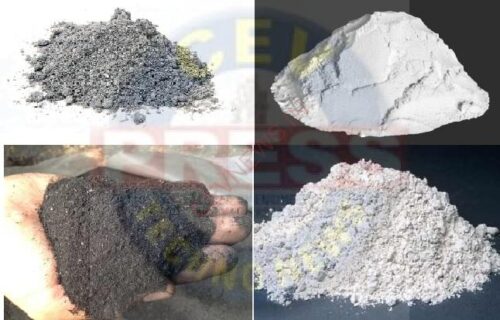HOW TO CALCULATE CEMENT AND SAND QUANTITY FOR PLASTERING
How to Calculate Cement and Sand Quantity for Plastering
Plastering is an essential step in the construction process that provides a smooth and even surface to walls and ceilings. To achieve a quality plastering job, it’s crucial to accurately calculate the quantities of cement and sand required for the project. This article will guide you through the process of calculating these quantities, ensuring a successful plastering endeavor.
Understanding the Basics
Before diving into the calculations, it’s important to understand the basic components of plastering mix. Plastering mix consists of cement, sand, and water. The cement and sand are mixed in a certain ratio to create a workable plaster mix. The ratio of cement to sand is typically defined by the type of plaster being used, such as a 1:4 or 1:5 ratio.
Steps to Calculate Cement and Sand Quantity
Follow these steps to accurately calculate the quantities of cement and sand required for plastering:
Step 1: Determine the Plaster Thickness
Measure the thickness of the plaster that you intend to apply to the surface. This measurement is usually in millimeters (mm). Let’s assume the plaster thickness is 15 mm for this example.
Step 2: Calculate the Surface Area
Measure the area of the surface you’re planning to plaster. This could be the total area of all walls or ceilings that require plastering. Measure the length and height of each surface in meters and then multiply them to get the total area in square meters (m²).
For instance, if you have two walls with dimensions:
- Wall 1: Length = 4 meters, Height = 3 meters
- Wall 2: Length = 5 meters, Height = 3 meters
Total Area = (4 * 3) + (5 * 3) = 27 m²
Step 3: Calculate the Volume of Plaster
To calculate the volume of plaster required, multiply the surface area by the plaster thickness: Volume = Total Area × Plaster Thickness
For our example, with a total area of 27 m² and a plaster thickness of 15 mm (which needs to be converted to meters by dividing by 1000): Volume = 27 m² × (15 / 1000) m = 0.405 m³
Step 4: Determine the Mix Ratio
As mentioned earlier, plaster mix ratios vary based on the type of plaster being used. Common ratios include 1:4 and 1:5 (cement:sand). Let’s assume a mix ratio of 1:4 for this calculation.
Step 5: Calculate Cement and Sand Quantities for 1:4
Ratio of mix is 1: 4 in which one part is cement and 4 part is sand. We know that cement mortar is used for many civil work like brick masonry, plastering work of internal and external sometime it is also used for dpc work.
Now that we have the volume of plaster and the mix ratio, we can calculate the quantities of cement and sand required.
Quantity of Mortar:-
Wet volume of mortar = 1m3
Dry volume of mortar = wet volume × 1.33 = 1m3× 1.33 = 1.33 m3
Dry volume of mortar = 1.33 m3
Volume of mortar= 0.405 m³
Mix Ratio –> 1:4
Dry volume of mortar = Wet volume x 1.33
Dry Volume = 0.405 m³ x 1.33 = 0.53865 m³
Quantity of cement:-
Quantity of Cement = (Dry Volume of mortar x Cement ratio) / (Sum of the ratio)
∴ Quantity of cement = (0.53865 x 1) /(1+4)= 0.10773 m³
Density of Cement = 1440 kg/m³
∴ Weight of Cement = 1440 x 0.10773= 155.1312 Kg
1 bag of cement contains 50 kg of cement
∴ Number of bags = 155.1312 Kg/50 = 3.10 No’s
Quantity of sand:-
Cement : Sand :: 1:4
Quantity of Sand = Quantity of Cement x 4
∴ Quantity of Sand = 0.10773 m³ x 4 = 0.430 m³
1 m³=35.3147 Cubic Feet (CFT)
∴ Quantity of sand = 0.430 x 35.3147 = 15.185 CFT
Density of sand = 1920 kg/m³
∴ Weight of the sand= 0.430 m³ x 1920 kg/m³= 885.60 kg
Cement Quantity= 0.10773 m³
Sand Quantity = 0.430 m³
Step 6: Convert to Bags directly from quantity (Alternate thumb rule)
Cement and sand are usually sold in bags. To determine the number of bags needed, divide the quantities by the volume in a standard bag. The volume of a standard cement bag is typically 0.035 m³.
Number of Cement Bags = Cement Quantity / Volume per Bag = 0.10773 m³ / 0.035 m³/bag ≈ 3.078 bags
Method -2
How much cement is required for mortar 1:4
Wet volume of mortar = 1m3
Dry volume of mortar = wet volume × 1.33 = 1m3× 1.33 = 1.33 m3
Dry volume of mortar = 1.33 m3
Weight of cement = part of cement × volume × density of cement
Weight = (1/5) × 1.33 m3×1440 kg/m3
Weight of cement = 383.04 kg
No of bags cement = 383.04/50 = 7.66 = 8 bags.
That’s 8 bags of 50 kg each (approx. 383 kg) of cement are required for 1 cubic meter (1m3) of mortar in a mix ratio of 1:4.
How much sand is required for mortar 1:4
Volume of sand in m3 = (4/5)× 1.33 m3 = 1.064 m3
1m3 = 35.3147 CFT
Volume of sand in cubic foot = 1.064 × 35.3147 = 37.57 CFT
That’s 37.57 CFT (approx. 1.064m3, or 1,690 kg, or 1.69 MT) of sand are required for 1 cubic meter (1m3) of mortar in a mix ratio of 1:4.
Accurately calculating the quantities of cement and sand required for plastering is essential for a successful construction project. By following the steps outlined in this article, you can ensure that you have the right materials on hand and minimize wastage. Remember to always double-check your measurements and consult with professionals if you’re unsure about any step in the process. Proper planning and calculation will lead to a smooth and efficient plastering job, resulting in a polished and attractive final surface.


